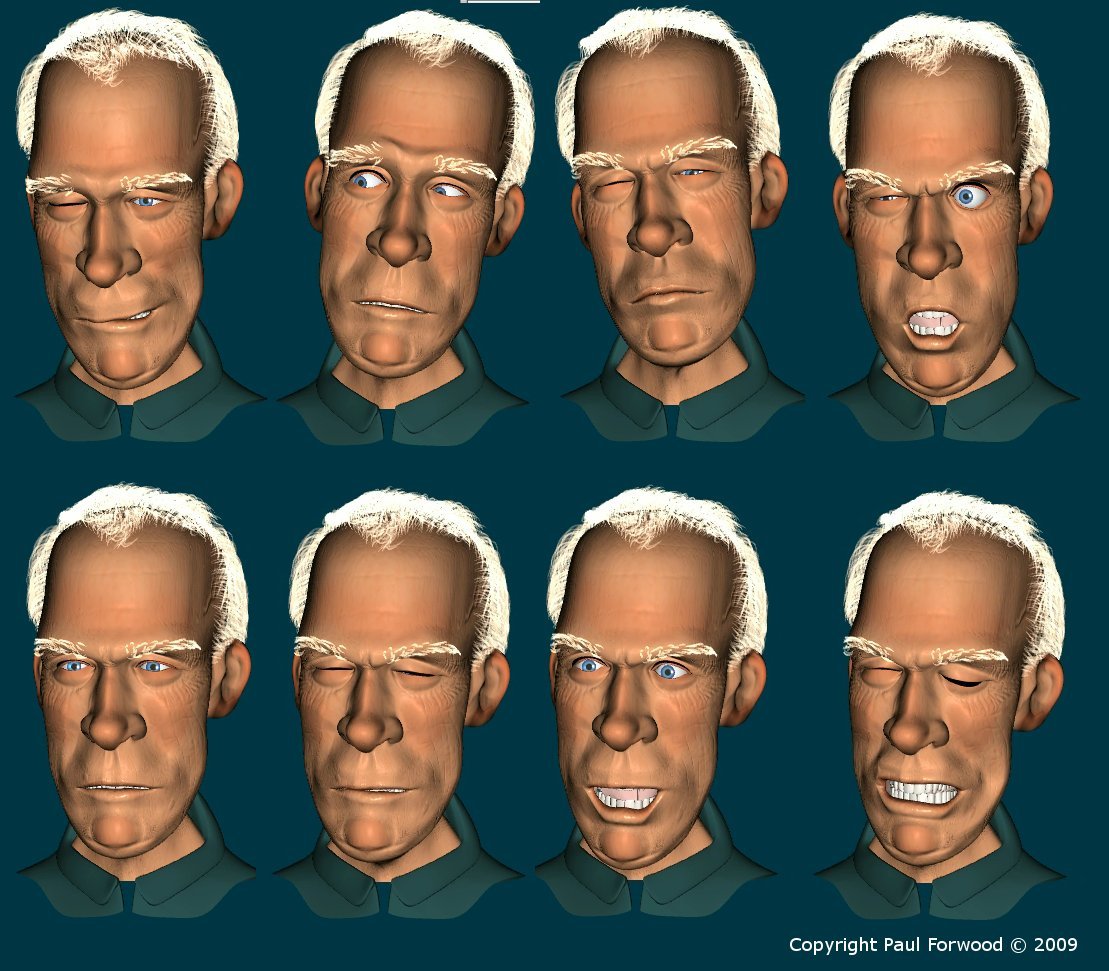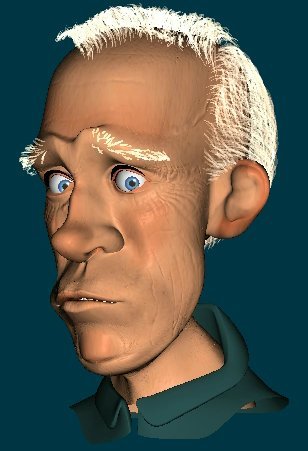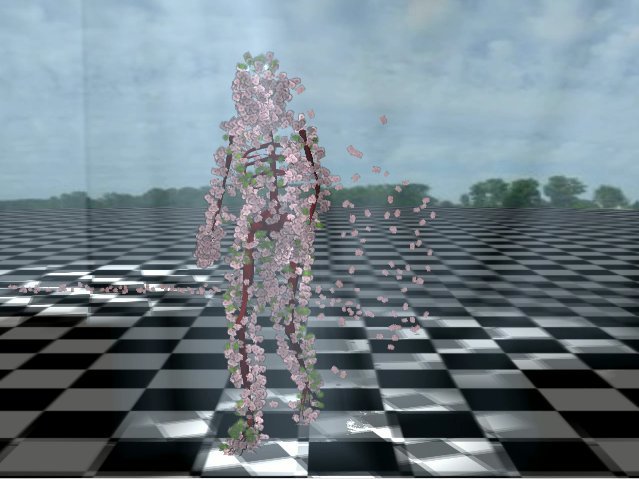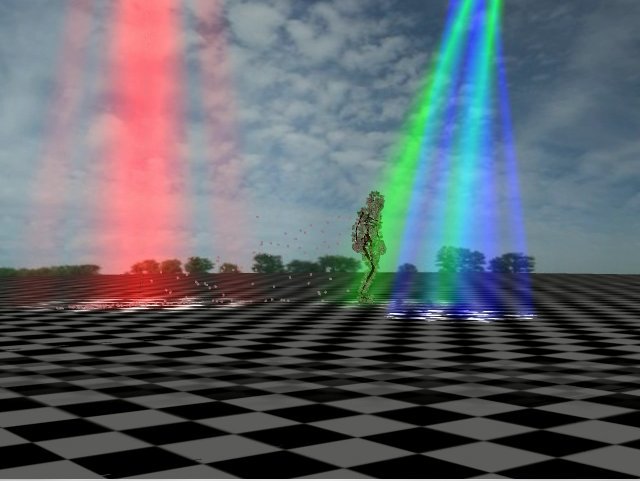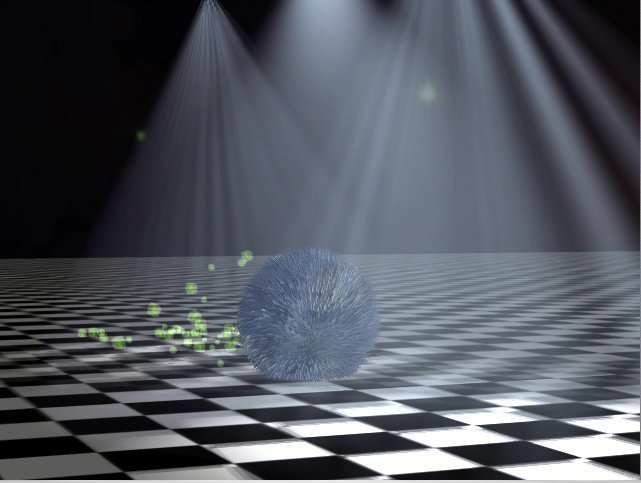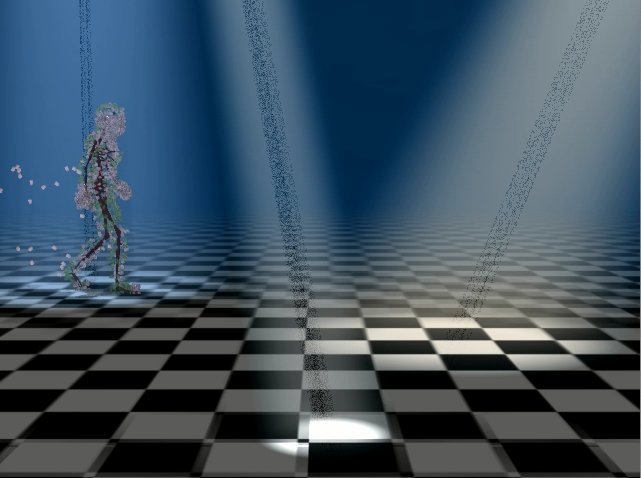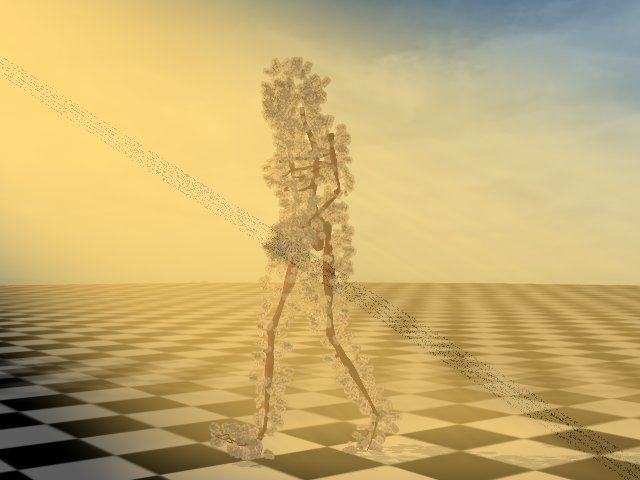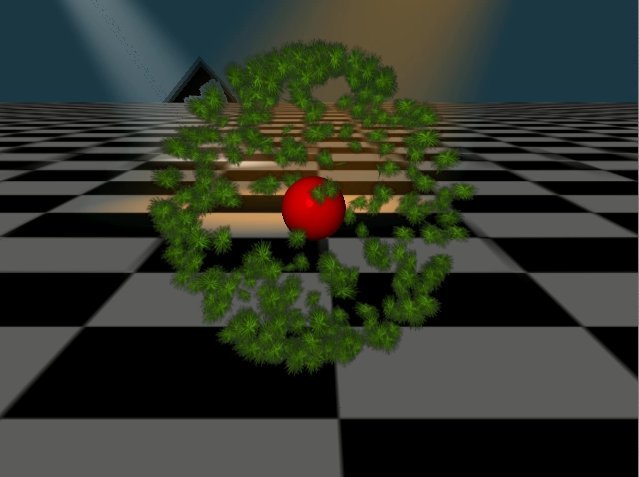-
Posts
5,112 -
Joined
-
Last visited
Content Type
Profiles
Forums
Events
Everything posted by Paul Forwood
-
Before you drop a second action onto your model, in the choreography, just quickly check that you have A:M pointing to the correct frame or you may be surprised when it doesn't appear where you expect it to be. Scale your choreography down until you can see the full extent of timeline used. You will now be able to see all of the actions that have been applied. Click on any that are out of place and drag to their required location. If you still have problems after that then refer to what Robcat has said.
-
No, this is just blocked with pose sliders but I have made the head rig compatible with A:M Track/ZignTrack so all I need to do is drop one of my old ZT Action files onto him, adjust the pivot points of a few bones and he should be talking rubbish.
-
I don't know what I have done but suddenly what was taking about 20 minutes to render is now taking several hours. Maybe when I updated the drivers for my graphics card it forced some changes to the rendering or maybe hair is a little denser. Anyway I blocked this out in an Action, tried to render it in a choreography and gave up after 45 minutes when the render was still working on frame 0, pass two, of a three pass render. So this is just rendered in an Action. I'll have to play around with hair some more to get render times down to something useful. Imagine if the rest of his body was in the scene with props and other actors! MyClint_Head_Talk_A001d.mov ------------------------- Edit: Okay! I reduced hair density from 60% to 45 %, adjusted the Muh Hair strength properties, (which had unexplainedly changed to very high values ), and switched shaders on in the render properties. Now my render times have gone back to their previous state... in the choreography... with ray traced shadows! That is great! But what changed the Muh Hair properties and why did I get such high render times even though I had shaders turned off in the render properties? One to watch I guess.
-
Here is a free font website that I had bookmarked: dafont.com There are plenty of free fonts there, with descriptions of their scope and visual examples, all categorised for easy searching. I'm not sure if I have actually tried any of them but they look okay. There is also a link to this free font maker on th dafont site: FontForge
-
-
-
Only refering to the speed at which you are turning out these episodes.
-
You are a machine, Ernest! Is this a one man project?
-
Very good model!
-
That's the one.
-
Ha! Funny! To get a more realistic paint finish you will need to add a skydome, or a blurred reflection map, so that there is something to reflect.
-
As I have now got enough understanding of volumetric lights to know that I can rely on them this will be my last post on the subject. I can move on to other stuff now. More hoorays! ParticleWoman_A_Test01__B00.mov
-
Here is a 360 degree flight around the lights with the colours set to RGB to see how well they interact. I thought that the dark specks might be caused by the angle of the light in relation to the camera but thankfully this shows that it is not the case. The red light, which has a width softness of 50%, is displaying some of those pesky particles but not enough to form streaks. The other two lights have their width softness set to 0% and 100% and don't show any signs of dark particles. Hooray! Cam360_A00b.mov All of these lights have simple gobos on them to help create the soft streaking of light rays. One more test render cooking at the moment, which I will post here, and then I will clear out some of the heavy deadwood that I have left all over this thread.
-
Thanks, Jake! I'll try messing with the shadow values. I have been concentrating on the light and model properties up to now and have found that I can eliminate the anomalies by keeping the width softness at either 0% or 100%. Anywhere inbetween causes a problem. I have eliminated just about every other possibilty.
-
Nice detail and economical splining.
-
An example of the testing that I have been doing: Aligned15deg_Box_Hair_Sprites_LR_angle_gobos_.mov This includes most of the ingredients that I thought might have been causing the problem. The troublesome black particles are less obvious but they are still there if you look closely.
-
I have been testing A:M 15e's volumetrics pretty intensively today and I haven't been able to reproduce those destructive streaks to any significant degree, just a few black specks in the core of the light beam. . I have yet to introduce a model from A:M 14 so maybe that will turn out to be the trigger. The black areas, that appear when two volumetric lights overlap, always occur when there is no background behind them so it must just be the alpha mix from the two lights. I will do a proper render, with alpha, and try compositing the results with a background.
-
That is what I am testing at the moment, Ken, in a new project, but I am getting perfect cones with none of those black streaks: LightTest_A00b.mov There are three lights in a closed box and none of them are displaying the problem so this is a good place to start adding things in until something breaks. Yes. I wanted plenty of particles visible for this test just so I had plenty of examples of how the flowers/petals would behave all along the path. Just as well or I might not have known that particles can become suspended on the surface of a volumetric light cone. These tests may not look very pretty but they answer alot of questions for me so that I can better judge what will be possible, or not.
-
I'm not sure yet but I vaguely recall a post on the subject from way back so I'll see if I can find that.
-
Well of course I'm talking about the dark, grainy streaks that run down the whole length of the light beam/cone. Those other soft streaks of light and shade is what I am after.
-
Volumetric lights are working well with my transparent geometry now but there are still a few things that I need to understand, such as... (movie removed to conserve space) ... those streaks! There must be some way of controlling the streaks. Some simple volumetric tests should shed some light. Do volumetric lights actually have some kind of mass? Those particles look as if they have become stuck on the light beam. Strange!
-

And now for something completely different...
Paul Forwood replied to Kelley's topic in Work In Progress / Sweatbox
Looking good, Kelley! These characters look like they would communicate by shouting, in clipped army speak, even when they are just inches from each other. -
Thanks, guys! After a whole load of tests I finally managed to get this transparent model to work with a volumetric light, apart from the streaks. I gradually deleted all groups and eventually all decals and materials too. After that I could create new groups and add materials and hopefully everything is working now, as far as I can tell. I'll see what happens when I add the other groups, materials, lights and fog. So the rule of thumb for A:M15e users, at the moment, is: When importing models from earlier versions of A:M be prepared to start afresh with your mapping.
-
Aha! I suddenly realised that the only place that the black triangle occured was where the lights crossed one another, infront of an empty background, (Alpha). I added a skydome and the problem went away. Transparency is working well too. Now if I can just find out what is causing the black streaks I will be a happy bunny. Maybe volumetrics need many passes. The following example uses just 3: BallTest_B00__NoFog_dome.mov
-
There are still a few glitches present in volumetrics: (movie removed to conserve space) Note the black triangle where the volumetric lights cross and the way that it affects the particle hair that is infront of it. There is also some very unnatural distortion of the ground plane texture occuring but that doesn't seem to be related to the volumetrics. (Visible in the other images also.)









